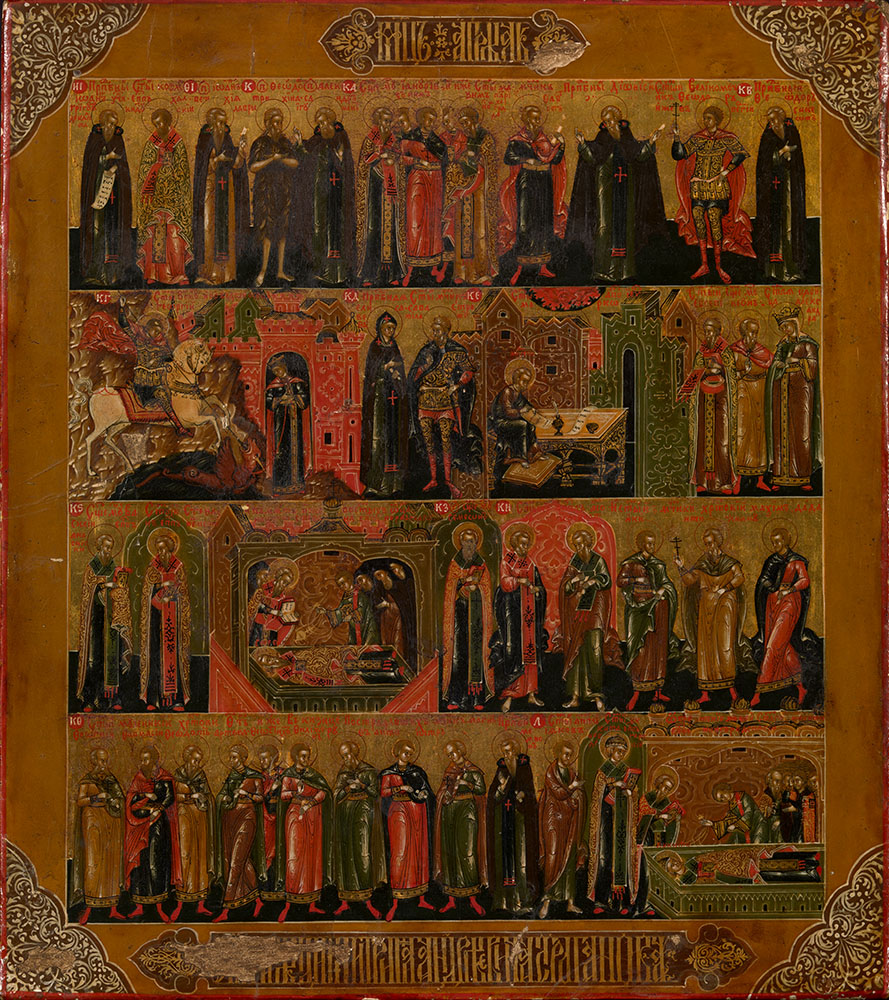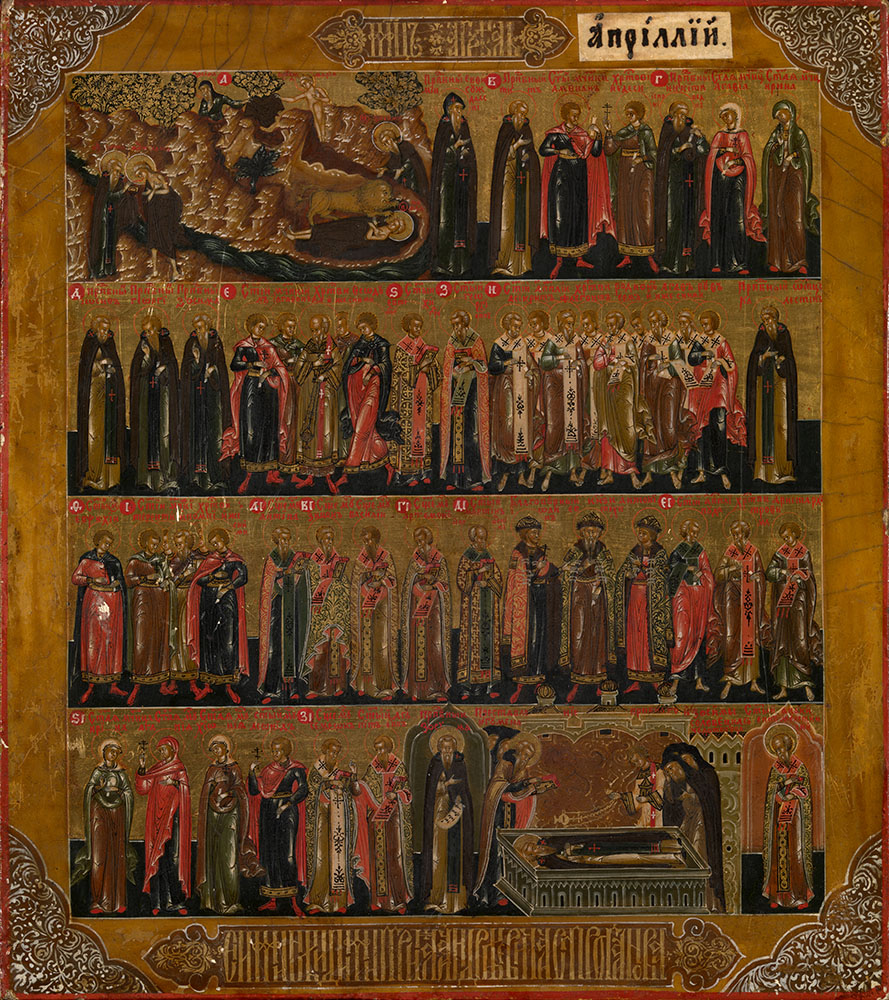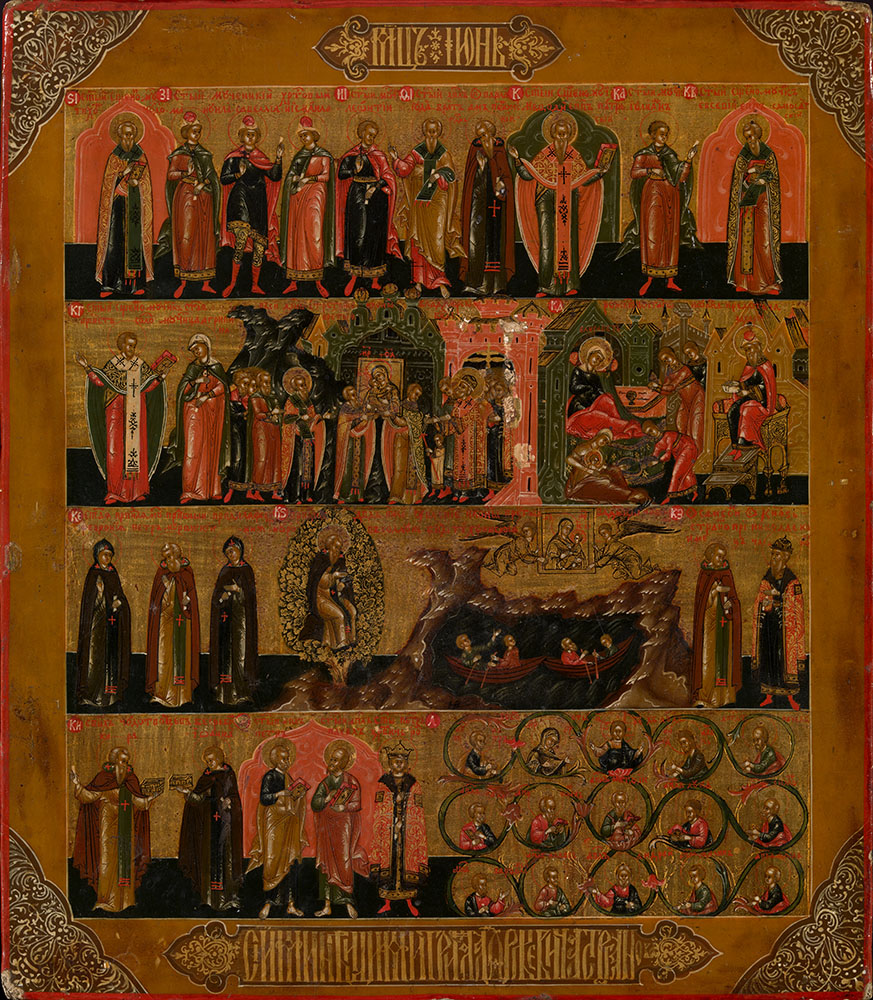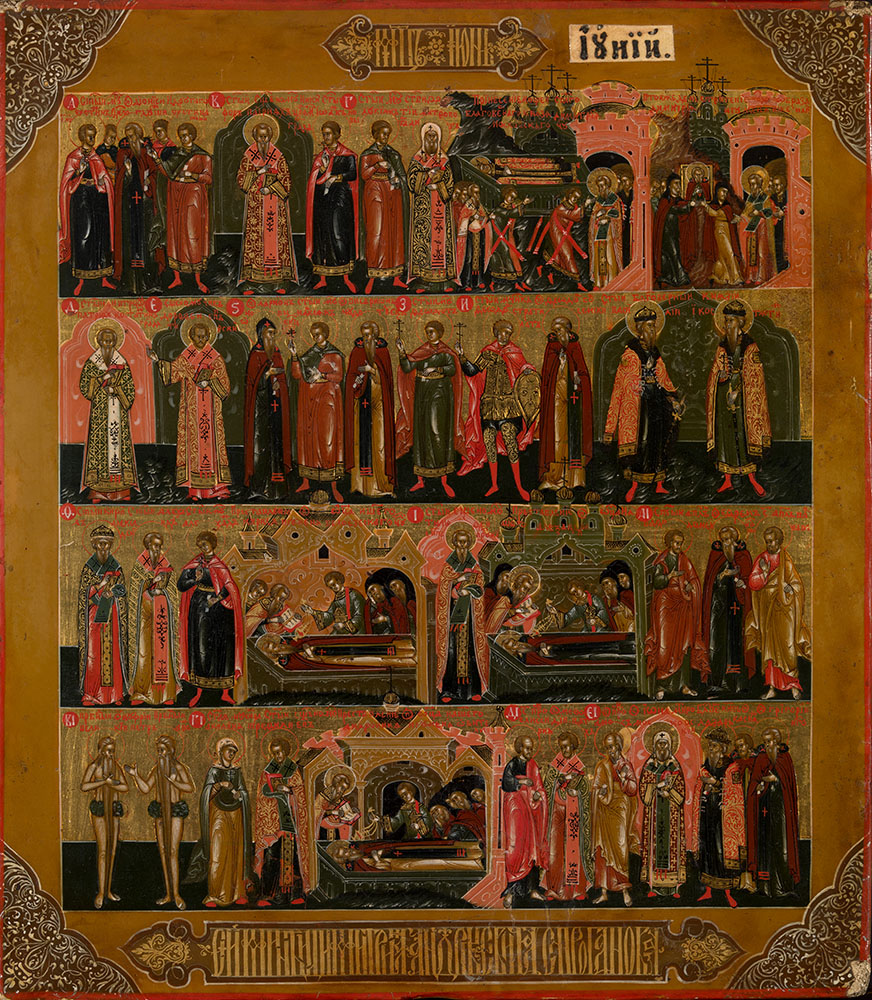MacDougall Auctions 2-3 December 2009
2 December 2009

* 12. A GROUP OF TEN EXCEPTIONAL MENAIA (TABLETS)
THE STROGANOV STUDIO, CIRCA 1660s, WITH ADDITIONS BY 19TH CENTURY PALEKH MASTERS
Each 21.3 by 18.5cm.
190,000-300,000 pounds
Provenance: Collection of the late artist Petros Sasaki, who purchased the tablets in Finland in the 1960s to early 1970s.
Private collection, USA.
Each tablet bears a calligraphic inscription in ochre in its lower field: "These menology icons are of Dimitry Andreevich Stroganov" (sometimes spelt "Stroganav").
This unique set of ten tablets is extraordinarily well-preserved and of the highest artistic quality. The tablets follow the traditional Russian calendar, beginning in September and finishing on 31 August (the menaia for January and March are lost). The icons depict saints and feasts, situated on either side of the tablets on four rows, and following the order of their commemoration in the Menaia (the book containing the sequence of services and prayers to saints for every day and month of the year). Such sets were usually kept in the chancels of large cathedrals and were laid on the lectern according to the month. However, as is seen from the (doubtless authentic) ownership inscription, the tablets belonged to Dimitry Andreevich, a prominent representative of the Stroganov family, whose main estate was in the Solvychegodsk district and who held vast lands in other regions of Russia. Having inherited the family estate after the death of his father Andrey Semyonovich Stroganov in 1641, Dimitry Andreevich soon became known as an assiduous landowner who enlarged his patrimonic wealth. He was also famous for his significant donations to the state treasury; he was greatly respected by the Tsar and the Patriarch and took an active part in governmental affairs. Following another of the family traditions, he continued to build many new churches across his lands and decorated them with icons of the very high artistic quality painted in the studios that had been associated with the Stroganov family since the late 16th century. During his lifetime other arts blossomed too, including embroideries and silver work decorated with the famous Usolie niello technique. These decades were the late period of the Stroganov School of icon-painting.
That the tablets belonged personally to Dimitry Andreevich suggests that the set was kept in the private Stroganov chapel of the Annunciation Cathedral of Solvyuchegodsk. The iconography of the menology icons dates back to the ancient tradition of depicting full figures of the saints, frontally or slightly turned towards each other. The content and the iconography of these menaia have no equivalent in medieval Russian art. All the saints, even local Russian saints, are depicted, including those who were canonised in the Councils before the mid 16th century and introduced into the church calendar in the following centuries, as well as new feasts incorporated into the Russian church calendar in the 17th century, such as the Deposition of the Robe of Christ (10 July). Another notable iconographic feature of the icon set is the introduction of a scene of a saint’s life to accompany his/her frontal figure: for example, the traditional image of the Holy Venerable Sergius of Radonezh, depicted in this case within an ogee-shaped arch, is complemented by a scene of his burial. Also it is important to note the image of Prince Dimitry of Uglich, notably appearing twice, in the scene of his nativity (19 October) and martyrdom (15 May), presumably connected with the celestial patron of the menalogy’s owner, Dimitry Andreevich Stroganov. A number of compositions dedicated to Old and New Testament events had never been depicted in the menaia icons in such detail before. The side of the February menaion, depicting the Tree of Jesse, is also unique.
The high artistic level of the icon-set is demonstrated by the delicate miniature painting of the scenes, the elegant figures of the saints, the multilayered rendering of the faces, the combination of gold and rich bright colours, and the masterly compositions of the complex scenes. The margins of the icons are decorated with the imitations of corner-mounts in the Usolie silver niello style. As almost no works from the late Stroganov period have survived, this set is unique and of particular significance. The style and the special features of these paintings, are characteristic for Palekh icons, which confirms the importance of the items from the Stroganov studios for the formation of the Old Believers' art of the villages in the Vladimir region.
Given that this is an almost complete set of menology icons exhibiting an ideal state of preservation, the high painting technique and the uniqueness of the iconography, their historical connection with the Stroganov family, these items can be considered to be of great artistic and museum importance.



Notes on symbols:
* Indicates 5% Import Duty Charge applies.
Ω Indicates 20% Import Duty Charge applies.
§ Indicates Artist's Resale Right applies.
† Indicates Standard VAT scheme applies, and the rate of 20% VAT will be charged on both hammer price and premium.